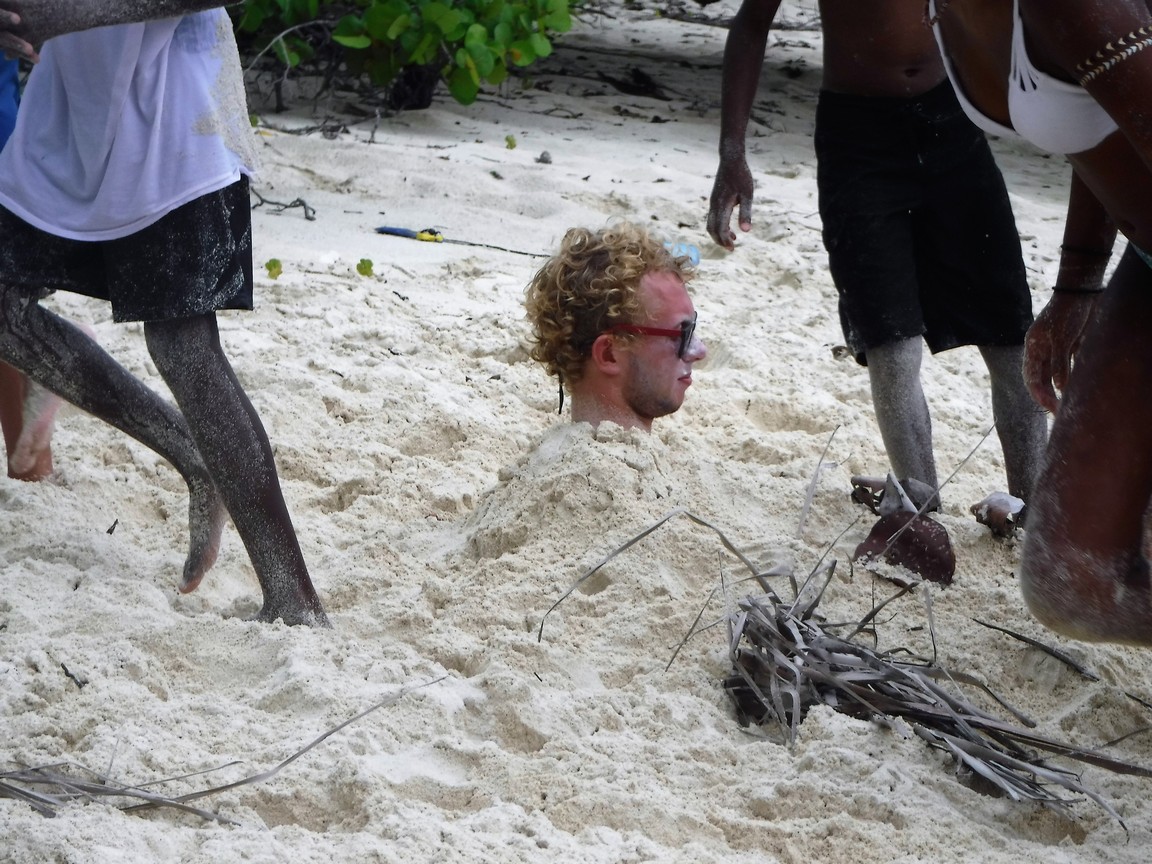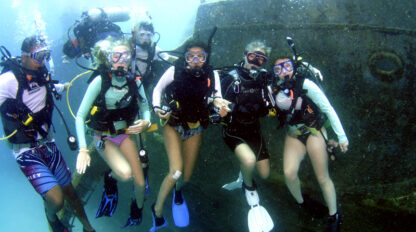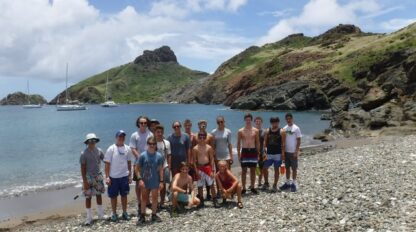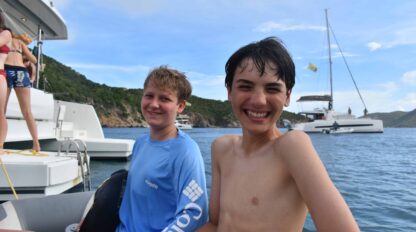Early Alpha, Charlie, Foxtrot and Sierra, Day 4: Little Harbor

Written by Katie Tuck
Edited by Meredith Evridge
We started the day with a fueling breakfast for the day that was ahead of us. Sliced mixed fruit and french toast! There were plenty of smiling faces when everyone saw what their boat mates on breakfast duty had prepared.
After breakfast clean, we geared up for departure from Cooper Island . There were new locations to be explored! “Farewell Cooper, you’ve been lovely,” said each boat. The first step to getting off our mooring ball was to assign positions for each step. Everyone was in their place, knew what to do, and it was executed with enthusiasm. The captain and mate held a quick debrief and told everyone constructive feedback for next time. Always striving to aim higher with every sailing maneuver, with plenty of support each time.
Today’s sail involved several learning outcomes: we focused on points of sail, furling and unfurling the jib, raising the sail, introducing downwind sailing (jibes) and med anchoring. A lot of lessons, to be sure, but as always, the staff knew how to explain it in a way that makes it simple, and so the students absorbed it well.
With all this new (or for some, reviewed) information, the boat had to work as a team to reach the next destination, Little Harbor, Peter Island, on time. Our eighty minute sail was a beautiful little journey with the wind nudging us along and the sun sparkling on the waves. This five nautical mile passage with the wind at 17-19 knots granted us four jibes before we reached our destination, pointing head to wind and furling and dropping our sails. We still had one more learning outcome to summit: med anchoring. This involves dropping an anchor at the bow of the boat and tying a line to a rock on the shore, having the boat snug between the two lines. It is good for anchoring at places like Little Harbor where it is a curved harbor and many boats (most of them ours) are anchored close together. Making sure that the anchor doesn’t drag before setting the snub takes focus and constant communication. Once that was secure, we had extra staff grab a line from the anchored boat and tie it to a sturdy rock on shore.
Greek wraps were whipped out and enjoyed. Sierra and Foxtrot took part in a turtle talk on Farallo (one of our boats) and then snorkeled around as a group learning about turtle tagging. Today was more of an exercise on how it worked rather than actual “turtling” that would happen shortly.
While Sierra and Foxtrot were captivated by their lesson, other students took turns sailing the Colgates, innertubing, and exploring an old house with cool tile work that was a short hike from where we were anchored.
As the sun got lower in the sky, students began to meander back to their home boats and potatoes began to lose their skins. Mashed spuds and barbeque chicken were on the menu to everyone’s delight!
After dinner was finished and cleaned up, our last activity for the day was a night dive with all boats. We gathered on the bow of one boat – no small feat with so many eager divers – to listen to one of our marine bio staff speak about night adaptations. We were told what to look for before wiggling into our fins and masks and jumping in the water. Grouped in threes with shared flashlights, we snorkeled around our boats. Some reported sightings of a sting ray while others saw a cluster of tarpon.
An ocean shower took place at each boat, full of soap suds and best buds jumping off the stern in the silliest manner they could muster. A boat meeting was the last thing on the schedule, always a nice way to conclude the day and go over tomorrow’s schedule.


